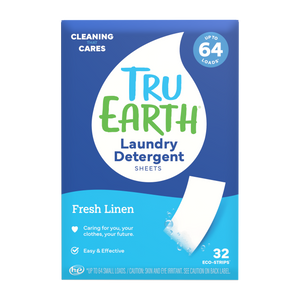I still remember it clearly; the long weekend when I plunked down in a Muskoka chair at our cabin in a brand-new pair of pricey athletic leggings. Easter marks the “opening of the season” at our family cabin, which typically involves a lot of raking, cleaning and yard work. When I stood up from the chair (which had not yet been scrubbed down) a section of my leggings peeled off the seat with resistance. Unknowingly, I’d sat on a gooey deposit of tree sap that had somehow escaped a nearby towering pine. I picked off the excess but for the duration of the weekend, every time I sat down, I’d feel the same peeling sensation. Here’s what I wish I had known at the time about removing sticky tree sap from clothing.
What makes tree sap so sticky, anyway?
According to The Tree Center, phloem is the gluey, sticky material in sap that people tend to unintentionally come into contact with. It is made of “sugars created by photosynthesis, which is then fed back into the tree and leaves as much-needed food during the growth period.”* Sap is also used as a defense against pests – a sticky trap that hardens when dry – it’s clever, really.
What you’ll need to remove sap from fabrics:
- Butter knife
- Rubbing alcohol/hand sanitizer
- Paper towel
- Stain remover
- Laundry detergent (recommended: Tru Earth)
How to easily remove tree sap from clothes in 6 easy steps
Step 1: Remove excess sap and whatever debris it may have attracted by using a blunt object like a butter knife to gently pry it from the fabric. Be careful not to scrape the sap deeper into the fibres. Removing sap before it hardens is recommended. However, if you didn’t notice the sap and it has already hardened, some Internet users recommend freezing it further and then prying off.
Step 2: Perform a test for colour fastness by applying a small dab of alcohol or a colourless, alcohol-derived hand sanitizer to a not-so-visible part of the garment. Leave it for a few minutes then dab with a paper towel. If the garment’s dye has not transferred to the towel, go ahead and saturate the blemish with the alcohol.
Step 3: Blot with a paper towel and inspect the stain to see if any residue remains.
Step 4: If so, pre-treat with a high performance stain remover, gently agitating it into the blemish with your fingers. Allow it to sit for 20 minutes.
How to create a concentrated stain remover with Tru Earth eco-laundry strips: First, tear a strip into small pieces and place in a shallow bowl. Add one tablespoon (15ml) of tap-hot water to begin dissolving it. Stir with a spoon to form a paste, adding small volumes of water as needed. Smear the concentrate atop the stain, gently pressing the mixture into it to allow the surfactant to get to work, releasing the residues from the fabric.
Step 5: Without rinsing, toss the item in the washer alongside a Tru Earth laundry eco-strip and select the hottest temperature cycle that is appropriate for the fabric type. (Not sure about that? Here's how to decipher symbols on the fabric care label.) Then, hang dry. For hand-wash-only items, tear the strip into pieces, place the bits in a sink or basin, and fill with tap-hot water. Allow it to soak, then agitate the article, rinse and hang dry.
*Do not resume machine-drying a stained item until you are finished treating it. Heat will only serve to set a stain deeper into the fabric.
Step 6: Inspect the blemish. If needed, return to step four and then launder again. If the stain persists, consider bringing the garment to a dry cleaner.
Free Shipping*

